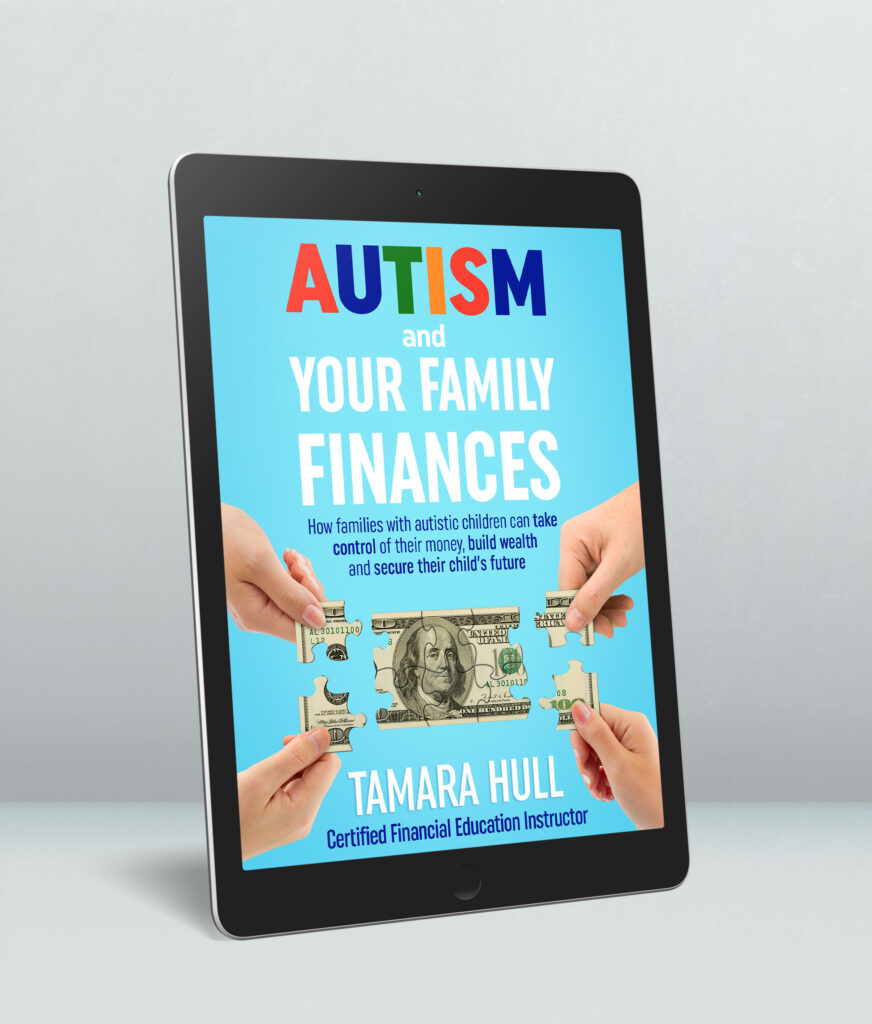Savings is a cornerstone of financial security and success. Once your autistic teen understands how important it is to save money (see Lesson 4), then the next step is to make sure they comprehend how to make their savings grow over time. That means it’s essential your teen understands the concept of compound interest and how it will make their savings grow over time.
As a reminder, we are using the book “I Want More Pizza: Real World Money Skills For High School, College, And Beyond” (affiliate link) by Steve Burkholder for these lessons. Steve is a certified public accountant and has worked in the finance department in higher education. He has a passion for teaching teens and young adults about personal finance. I found his book a few years ago when looking for a good resource for J, my son with autism and ADHD, to learn about money.

Check out the first four lessons of this series:
Kids Money Skills, Lesson 1: Why autistic teens should learn about personal finance
Kids Money Skills, Lesson 2: Encourage a positive money mindset in your autistic teen
Lesson #5: The importance of compound interest
Read the “3rd Slice” (pages 43-59) of “I Want More Pizza” (affiliate link) with your teenager. This section is quite long. I found it is best to let your teen read it on their own before the lesson.
Savings and Investments Basics for your teen
- There are several basic investments that can be used to save or invest money. They include:
- Savings account – an account at a bank, credit union or brokerage firm where you can deposit money and earn a little bit of interest each month.
- Certificate of Deposit (CD) – an account that is similar to a savings account, but you let the bank keep your money for a certain number of months. CDs pay a higher interest rate than a savings account.
- U.S treasury bonds – bonds enable you to loan the U.S. government an amount of money for a certain length of time. The government pays you interest for the loan. (Businesses do this too with bonds that you can purchase individually or through bond mutual funds.)
- Stocks – these are individual shares of a company that you can buy. Stocks are the riskiest of the investments. Yet, they also bring the greatest reward and can grow your money the most. Depending on what type of stock you purchase, your risk may be moderate to high.
- Mutual funds – these are “portfolios” of stocks or bonds that you can purchase and are professionally managed by a financial expert. Because the fund has a variety of stocks, bonds or other types of investments, they are called “diversified.” This means that many mutual funds are less risky overall than purchasing individual stocks.
Takeaways to share with your teen
- These accounts grow your money because the bank (or mutual fund company, government, etc.) pays you interest for giving them access to your money. Interest in the amount of money they pay you each month. They usually give you a percentage they will pay you, called an interest rate.
- Savings and investment accounts come with different levels of risk. The safest are savings accounts, which are federally protected and insured up to $250,000 per depositor per insured bank. That means that if something bad happens to a bank, your money is backed by the government for this amount. CDs and bonds are then the next less risky, with mutual funds and stocks being riskiest.
- Investing in stock and mutual funds may sound scary, but the rewards are worth the risk to grow your money over time. The important thing is to learn to manage your risk. Putting all your money in one stock is the riskiest investment you can make. However, if you spread your money out over different stocks, mutual funds, bonds, CDs and savings accounts, you diversify your investments and reduce your overall risk while achieving a greater reward of growth for your money.
- Investing your money long term will grow it over time through “magic” called compound interest. Investopedia defines compound interest as “the interest on a loan or deposit calculated based on both the initial principal and the accumulated interest from previous periods.” That means that over time, you are earning money on the original amount you invested but also the additional money that accumulates from more money you deposit plus all the interest you earn over time. (See the tables that Steve shares on pages 53 -55.)
- As Steve notes, compound interest is your BFF when it comes to growing your money!
- The younger you begin to save and invest, the more time your money has to grow and the more wealth you will build throughout your life!
Savings discussion tips with your teen
- What are your feelings about risk when it comes to money? Does risking your money for reward and growth scare or excite you? Try this risk calculator to help you determine your level of risk tolerance.
- How can you best manage your risk for your savings and investing?
- Do you understand compound interest? How can it help you build your money over time?
Practical Money Activity
Use this online calculator from Nerd Wallet to see how money grows through the magic of compound interest!







